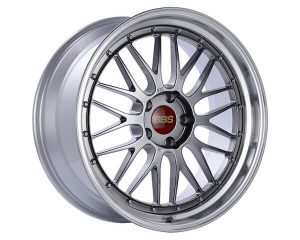Magnesium is an alloy used in brazing and soldering.
When magnesium is added to steel is makes it resistant to abrasion, which is why steel used in grinding tools has a magnesium alloy.
The Mig welding process is used for thicker alloys while Tig is used for thinner metals.
Brazing
Furnace, torch, and flux dip brazing can be used. Furnace and torch brazing are generally limited to M1A alloys. Flux dip brazing can be used on AX10, AX31B, K1A, M1A, and ZE10A alloys.
Brazed joints are designed to permit the flux to be displaced from the joint by the brazing filler metal as it flows into the joint.
The best joints for brazing are butt and lap.
Suitable clearances between parts are essential if proper capillary filling action is to take place.
The suggested clearance is from 0.004 to 0.010 in. (0.102 to 0.254 mm).
In furnace brazing, beryllium is added to the brazing alloy to avoid ignition of the magnesium.
Equipment and Materials
Furnaces and flux pots are equipped with automatic controls to maintain the required temperature within ± 5ºF (2.7ºC). In torch brazing, the standard type gas welding is used.
Chloride base fluxes similar to those used in gas welding are suitable. A special flux is required for furnace brazing. Fluxes with a water or alcohol base are unsuitable for furnace brazing.
A magnesium base alloy filler metal is used so that the characteristics of the brazed joint are similar to a welded joint and will offer good resistance against corrosion.
If working with an aluminum magnesium alloy consider flux free brazing rods such as HTS 2000.
Base Metal Preparation
Parts to be brazed must be thoroughly cleaned and free of such substances as oil, grease, dirt, and surface films such as chromates and oxides.
WARNING
Precleaning and postcleaning acids used in magnesium welding and brazing are highly toxic and corrosive. Goggles, rubber gloves, and rubber aprons must be worn when handling the acids and solutions. Do not inhale fumes and mists. When spilled on the body or clothing, wash immediately with large quantities of cold water. Seek medical attention.
Never pour water into acid when preparing solutions; instead, pour acid into water. Always mix acid and water slowly. Cleaning operations should be performed only in well ventilated areas.
Mechanical cleaning can be accomplished by sanding with aluminum oxide cloth. Chemical cleaning can be accomplished by vapor degreasing, alkaline cleaning, or acid cleaning. An acid solution consisting of 24 oz (680.4 g) of chromic acid (CrO3), 40 oz (1134 g) of sodium nitrate (NaNO3), and 1/8 oz (3.54 g) of calcium or magnesium fluoride with enough water to make 1 gal. (3.8 1) is suitable for this purpose. Parts are immersed in the solution at 70 to 90ºF (21 to 32ºC) for 2 minutes and then rinsed thoroughly, first in cold water and then in hot water.
Brazing Procedure
Torch Brazing
The equipment and techniques used for gas welding are used in brazing magnesium.
A neutral oxyacetylene or a natural gas-air flame may be used. In some operations, natural gas is preferred because of its soft flame and less danger of overheating.
The filler metal is placed on the joint and fluxed before melting, or it is added by means of a flux coated filler rod. If a rod is used, the flame is directed at the base metal, and the rod is dipped intermittently into the molten flux puddle.
Furnace Brazing
The parts to be brazed are assembled with filler metal placed in or around the joints. A flux, preferably in powder form, is put on the joints. Then the parts are placed in a furnace, which is at brazing temperature. The brazing time is 2 or 3 minutes, depending on the thickness of the parts being brazed. The parts are air-cooled after removal from the furnace.
Flux Dip
The joints are provided with slots or recessed grooves for the filler metal, to prevent it from being washed into the flux bath. The parts are then assembled in a fixture, thoroughly dried, and then immersed for 30 to 45 seconds in a molten bath of flux.
Cleaning After Brazing
Removal of all traces of flux is essential.
The flux residues are hydroscopic and will cause a pitting type of corrosion.
The parts should be cleaned in the same manner as for gas welded parts.
Magnesium Soldering
Magnesium and magnesium alloys can be soldered. However, soldering is limited to the filling of small surface defects in castings, small dents in sheet metal, and other minor treatments of surfaces.
Soldering should not be used in stress areas or to join magnesium to other metals because of low strengths and brittle joints obtained.
Soldering Procedure
Magnesium alloy surfaces must be cleaned to a bright metallic luster before soldering to ensure good fusing between the solder and magnesium.
This cleaning can be accomplished by filing, wire brushing, or with aluminum oxide cloth.
The area to be soldered should be heated to just above the melting point of the solder. A small quantity of solder is applied and rubbed vigorously over the area to obtain a uniform tinned surface. A stiff wire brush or sharp steel tool assists in establishing a bond.
After the bond is established, filler metal may be added to the extent desired. Flux is not necessary.
Magnesium vs. Aluminum Welding
Magnesium brazing is similar to aluminum in terms of the way it is treated. It has a low melting point and conducts heat well. The one difference between magnesium and aluminum is that magnesium is weaker than the surrounding metal as a byproduct of the heat used during the process.
Magnesium is less dense than aluminum, making it lighter in weight while still
